
Photo by Paul Skorupskas / CC0
Regardless of whether you are a hobbyist or professional, you will want to get the best quality images for the time that you spend photographing nature. Part of getting great results involves being properly equipped. There are so many different lenses available that it can be a little overwhelming at first to know which ones will be the best choice for your landscape and nature photography.
Of course, the quality of the lens can vary, and there are also lenses for all kinds of different purposes with their own strengths and weaknesses. In this article we’ll look at which lenses are most useful specifically for landscape photographers. Hopefully by the end or the article you will have a better idea of which lenses would be the best choice for you.
APS-C vs. Full Frame
Before we get into the specifics of any lenses it is important to note the type of camera that you will be using. The focal length is impacted based on whether you are using a camera with an APS-C (“cropped”) sensor or a full frame sensor. Cameras with APS-C sensors will give the photos a slightly more zoomed in look. The smaller sensor will essentially crop off the edges of the image.
If you’re using a camera with a cropped sensor you can multiply the focal length by about 1.5 to get the effective focal length. For example, if you are using a camera with an APS-C, or cropped, sensor and a 24mm lens, you will get the equivalent of what you would get with a 36mm focal length on a full frame camera. So full frame cameras allow you to go a little wider.
You can certainly get great photos with either type of camera (APS-C or full frame). You just need to be aware of the difference when you are considering a lens purchase, and be sure that you purchase a lens that is compatible with your camera. For example, Canon’s EF-S series of lenses are made for APS-C sensors and will not work with full frame sensors.
What Range of Focal Lengths Do You Need to Cover?
In landscape photography there are times when you will want a very wide angle (for example, 17mm), there are times when a normal or standard focal length will do (something like 50mm), and there are times when you will need a telephoto lens (something like 200mm).
Before deciding which lenses you will need to have in your kit it is helpful to think about the situations that you are likely to encounter. You’ll need to consider how wide you might need to go, and how much reach will you need from a telephoto lens.
In general, for most landscape photographers a pretty good range would be from about 15mm to 200mm (on a full frame sensor). If you have 3 lenses in your kit and they combine to cover that range, you’re in pretty good shape. We’ll use that range as a starting point for this article.
The Basic Lenses for Landscape Photography
We’ll categorize the lenses into 3 main types: wide angle, standard, and telephoto.
Wide Angle Lenses
Wide angle lenses are a staple of landscape photography because they are great for capturing vast, epic landscapes. Typically anything 35mm or wider on a full frame camera will fall into the classification of a wide angle lens.
With a wide angle lens you can get very close to an object in the foreground and still get a lot in the background. This is extremely useful for landscape photography. For example, you may use a wide angle lens to get close to some wildflowers while still being able to include vast mountains in the background.
Standard Lenses
A standard lens could fall somewhere in the range of 35mm to about 70mm on a full frame sensor. A lens in this range allows you to cover the middle ground for those situations where you don’t need a wide angle or the reach of a telephoto.
Telephoto Lenses
Focal lengths of 75mm or more generally fall into the telephoto range. As a landscape photographer you will probably want to have a lens that allows you to go to at least 200mm, but some photographers prefer to also be able to go to 300mm, 400mm, or even more.
Unless you are also doing a lot of wildlife photography you will probably find that you use a wide angle lens much more often than a telephoto lens, so I recommend prioritizing your budget accordingly. If you find that you want to be able to zoom in more than 200mm you can always buy another lens in the future when that time comes, or you could use a teleconverter.
The Ideal Combination of Lenses
The most common approach to covering a range from about 15mm – 200mm is to have 3 different lenses: one from each of the 3 classes that we just covered above. The specific lenses that you buy will depend on the brand of camera that you have (Canon, Nikon, Sony, etc.), but most brands, and even 3rd party lens makers like Tamron and Sigma, tend to have lenses that fall into very similar categories.
Below we have each of the three categories listed, along with recommended lenses for each category. Select one lens from each category and you will have an excellent combination of lenses that should meet your needs.
Wide Angle Lenses for Landscape Photography
This is my go-to lens. It offers great image quality and sharpness, is still affordable, and allows for the use of standard filters like a circular polarizer or neutral density filter. Canon users have some other options like the EF 16-35mm f/2.8L III USM. The f/2.8 is more expensive (due to the maximum aperture) and from just about every report it is not as sharp as the 16-35mm f/4. Also, the EF 17-40mm f/4L is a little cheaper, but is not quite as sharp as the 16-35mm f/4.
This is another excellent option for Canon users with outstanding image quality. It gives you the ability to shoot extremely wide at 11mm, but it does come with a few drawbacks compared to the 16-35mm f/4. For starters, it is a very expensive lens at about 3x the cost of the 16-35mm f/4. Also it has a bulbous front element, so you won’t be able to use the same screw-on filters that you might use on other lenses.
Canon EF-S 10-22mm f/3.5-4.5 USM (for APS-C sensors only)
Are you using a Canon camera with a cropped frame sensor? If so, you can get this quality lens at a very reasonable price. It gives you roughly the same focal lenghth on an APS-C sensor that you would get with the 16-35mm on a full frame sensor.
Nikon AF-S Nikkor 16-35mm f/4G ED VR
Nikon users have this option for a high performance ultra wide angle lens with a maximum aperture of f/4. The 14-24mm f/2.8G ED is another option, although it is more expensive due to the maximum aperture of f/2.8.
Nikon AF-S DX Nikkor 10-24mm f/3.5-4.5G ED (for APS-C sensors only)
This is a good quality lens that costs slightly less than the 16-35mm. It is only for cameras with cropped sensors (APS-C).
Tamron SP 15-30mm f/2.8 Di VC USD
This is an excellent 3rd party option for full frame or APS-C. It is available for Canon, Nikon, and Sony/Minolta mounts.
Sigma 12-24mm f/4 DG HSM Art Lens
This is another excellent 3rd-party ultra wide angle lens. It’s priced higher than the Tamron 15-30mm, but does go all the way to 12mm and offers excellent quality. It is available for Canon, Nikon, and Sigma mounts.
Standard Lenses for Landscape Photography
This is a great option for a quality, affordable standard zoom.
Canon EF 24-105mm f/4L IS II USM
Another quality option for Canon users. This one gives you a bit more reach as compared to the 24-70mm.
Nikon AF-S Nikkor 24-70mm f/2.8G ED
A quality standard zoom for Nikon users.
Nikon AF-S Nikkor 24-120mm f/4G ED VR
This is another good option for Nikon users, and is considerably cheaper than the 24-70mm. At f/4 you won’t have the same maximum aperture as the f/2.8 , but that is typically not an issue with most landscape photography.
Sigma’s 24-105mm art lens is a quality lens (full frame or APS-C) at a reasonable price. It is available for Canon, Nikon, Sony and Sigma mounts.
Telephoto Lenses for Landscape Photography
This is a good telephoto option that will meet the needs of most landscape photographers. If you want a little more reach you could go with the 70-300mm f/4-5.6L IS USM, if you don’t mind spending a few hundred dollars more.
Nikon AF-S Nikkor 70-200mm f/4G ED VR
Again, this focal length will meet the telephoto needs for most of your landscape photography. If you want more you could go with the 80-400mm f/4.5-5.6 G ED VR instead.
Tamron SP 70-200MM F/2.8 DI VC USD
A third party option, the Tamron 70-200mm is a quality, affordable lens. It is available for Canon and Nikon.
Additional Options
While not necessary, there are some other types of lenses that can come in handy as well. I would recommend adding these lenses only after you have the basics above covered.
Fisheye Lenses
A fisheye lens will give you an ultra wide angle and some distortion. Lines at the center of the image will be straight. Lines at the edges of the frame will be very curved and distorted. A fisheye lens is kind of a fun option to have, but definitely not a necessity. See our Reviews of the Best Fisheye Lenses for Canon and Reviews of the Best Fisheye Lenses for Nikon.
Canon EF 8-15mm f/4L Fisheye USM
A quality fisheye lens with a little bit of zoom.
Nikon AF-Fisheye Nikkor 16mm f/2.8D
Nikon’s best fisheye is a prime lens.
Tilt Shift Lenses
Tilt shift lenses can be useful for perspective control. A tilt shift lens may be helpful for avoiding distortion on cityscape photos, simulating a miniature scene, or for creating panoramas. Like fisheye lenses, a tilt shift lens is definitely not essential, but can be a fun option. Tilt shift lenses tend to be expensive and you will have to learn how to use them effectively.
A wide angle tilt shift lens with high image quality.
Nikon PC-E FX Nikkor 24mm f/3.5D ED
A high-quality tilt shift lens from Nikon. It’s not quite as wide as the Canon lens, but still a nice wide angle at 24mm.
Macro Lenses
Macro lenses can be useful for taking photographs unusually close to the subject. For most landscape and nature photography you can get by without a macro lens. However, if you want to have a macro lens for extreme closeups some good options are listed below. See our Reviews of the Best Macro Lenses for Canon and Reviews of the Best Macro Lenses for Nikon.
Canon EF 100mm f/2.8L Macro IS USM
A high-quality macro lens for Canon users
Nikon AF-S VR Micro Nikkor 105mm f/2.8G IF-ED
A high-quality macro lens for Nikon users.







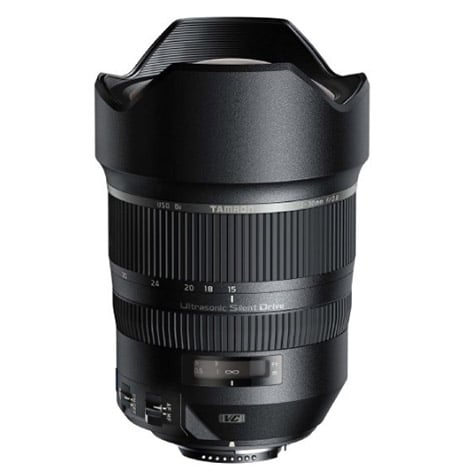
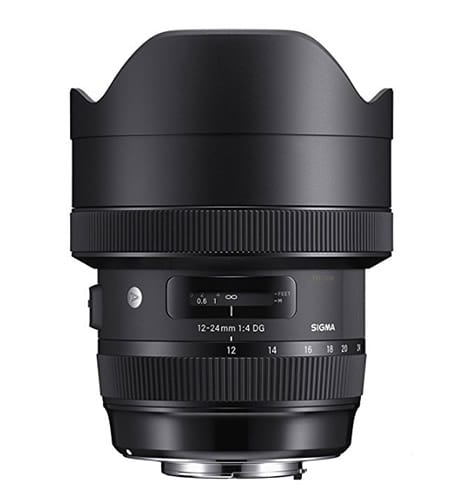




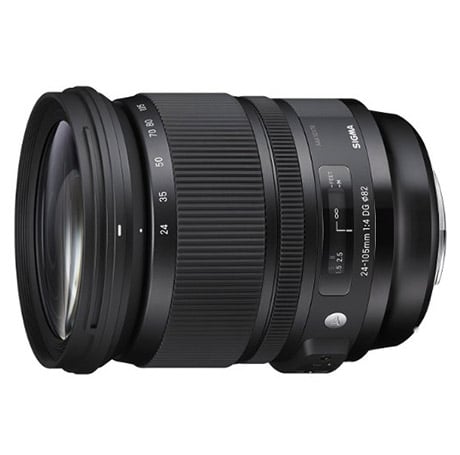


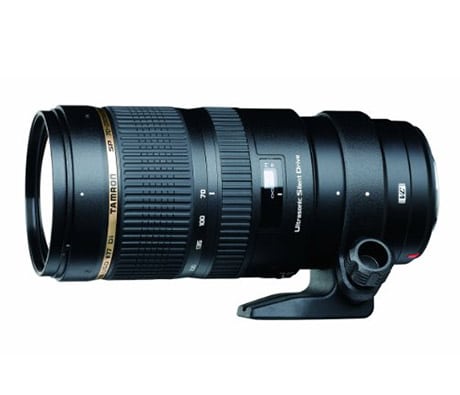







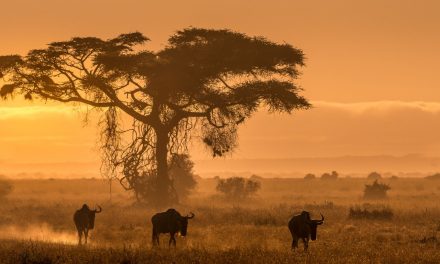

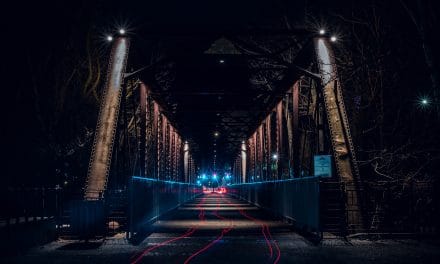
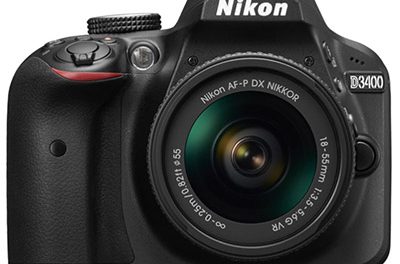





You might want to make a few Nikon-centric edits:
The Nikon 16-35 f/4 is probably a more practical lens for landscape than the 14-24.
The 24-120 f/4 is more affordable than the 24-70 f/2.8 and fine for landscape.
Just this year, Nikon put out a 19mm tilt-shift but a bit expensive for all but professional use.
And, not Nikon related, you might want to mention some of the outstanding third-party offerings:
Tamron 15-30
Rokinon 24mm tilt-shift
Sigma 24-105
Hi Patrick,
Thanks for your feedback. I made some additions to the post. The third party lenses weren’t included in the article just because of not wanting the number of lenses mentioned to be overwhelming, but we may go back and include those later.
That’s why I wrote “outstanding,” not as in ‘third-party lenses are outstanding’ but those I mentioned are especially worth noting as compared to the Canon and Nikon alternatives.
Rokinon 14mm f2.8 is a great landscape lens. Least affordable of the aforementioned lenses.An excellent wide angle lens.It shines in astrography as it does not show comma. Some review have it besting Nikon 14-24mmm and Canon 11-24mm. I have both the Rokinon and Nikon lens, always will take out the Rokinon before the Nikon. Downside like all bulbous end wide angle lens is that you need specialized filters for day time landscape shots.
The excellent Rokinon 14mm f2.4 lens by the way is manual and may not appease to some for that reason.
Hi, thanks for this good review.
Like a lot of photographers I’ve swiched to M4/3 captor system due to its impressive compacity and lightness versus other systems. Then I can allways take a very discreet camera with me without boring.
Crop factor is x2 comparing to 24×36, and then there is often a x2 difference in weight and dimension, particulary welcome with lenses: f:1.7 or 1.8 primes are all between 100/200g, and 50/100g for f:2.5 pancakes…
All MFT lenses can fit all Olympus and Panasonic cameras.
Considering your equivalent choices for landscape we can find in zooms category:
WIDE ANGLE LENSES:
– Olympus Zuiko 7-14:2.8. Just perfect! Pro: IQ, Weather-Proof. Cons: no filter mount, somewhat bulky for mft.
– Panasonic Leica 8-18:2.8-4. Pro: the same than above with filter mount. Cons: sliding diaphragm aperture, bulky.
– Panasonic Lumix 7-14:4. Pro: IQ, compacity. Cons: can present some purple blobs on Olympus camera.
– Olympus 9-18:4-5.6. Pro: very compact and light! Filter mount. Cons: average but still good IQ.
STANDARD LENSES:
– Olympus 12-40:2.8 (wp)
– Panasonic 12-35:2.8
– Panasonic 12-60:2.8-4 (wp) and 12-60:3.5-4.5
– Olympus 12-50:3.5-6.3
TELEPHOTO LENSES:
– Olympus 40-150:2.8 (wp). Possibility to add a x1.4 converter.
– Pana-Leica 50-200:2.8-4 (wp). x1.4 and soon x2 converters too.
– Panasonic 35-100:2.8. No wp but quite compact and excellent too.
– A lot of 50-200, 70-300, 100-300 and even 100-400 very good but unliminous lenses…
OTHER OR THIRD PARTY LENSES:
– Olympus 8:1.8 Fisheye. Pro and very luminous for landscape and astrophotography.
– Samyang/Rokinon 7.5:3.5 Fisheye. Manual focus but so tiny!
– Venus Optic Laowa 7.5:2. this manual focus 15mm eq, without distortion, exists in a light version for Dji drones.
ALL-IN-ONE ZOOMS:
– Olympus 12-100:4. A bulky but real pro wp lens: just perfect but not for low-light… whereas on E-M1 MkII one can be sharp till 1sec shutter speed (or more) with Dual-IS…
– Olympus 14-150:4-5.6. Compact and wp, with average IQ passed 100mm.
– Panasonic 14-140:4-5.6. The same without wp but a little more sharp.
So there is many possibilities for landscape photography in MFT, from the tiny 500g 9-18 + 14-150 duo to the 2Kg Olympus f:2.8 trinity with all the mixes you want and the huge primes choice too…
My personal choices are:
– GM5 + 12-32 + 20:1.7 for everydays (very compact size).
– EM1 + 7-14 + 12-40 + 75:1.8 + EF-L 135:2 and EF to MFT converter (or old ZD 50-200:2.8-3.5) for photo trip.
– EM10 + Samyang fisheye + Laowa 7.5:2 + Pana 15:1.7 + Mitakon 25:0.95 + Zuiko 50:2 macro + Zuiko 75:1.8 + Canon 135:2 & x1.4 for personal pleasure, versatility and light primes top quality.
– EP5 + 9-18 + 14-150 + 20:1.7 for being light during a walk.
awesome